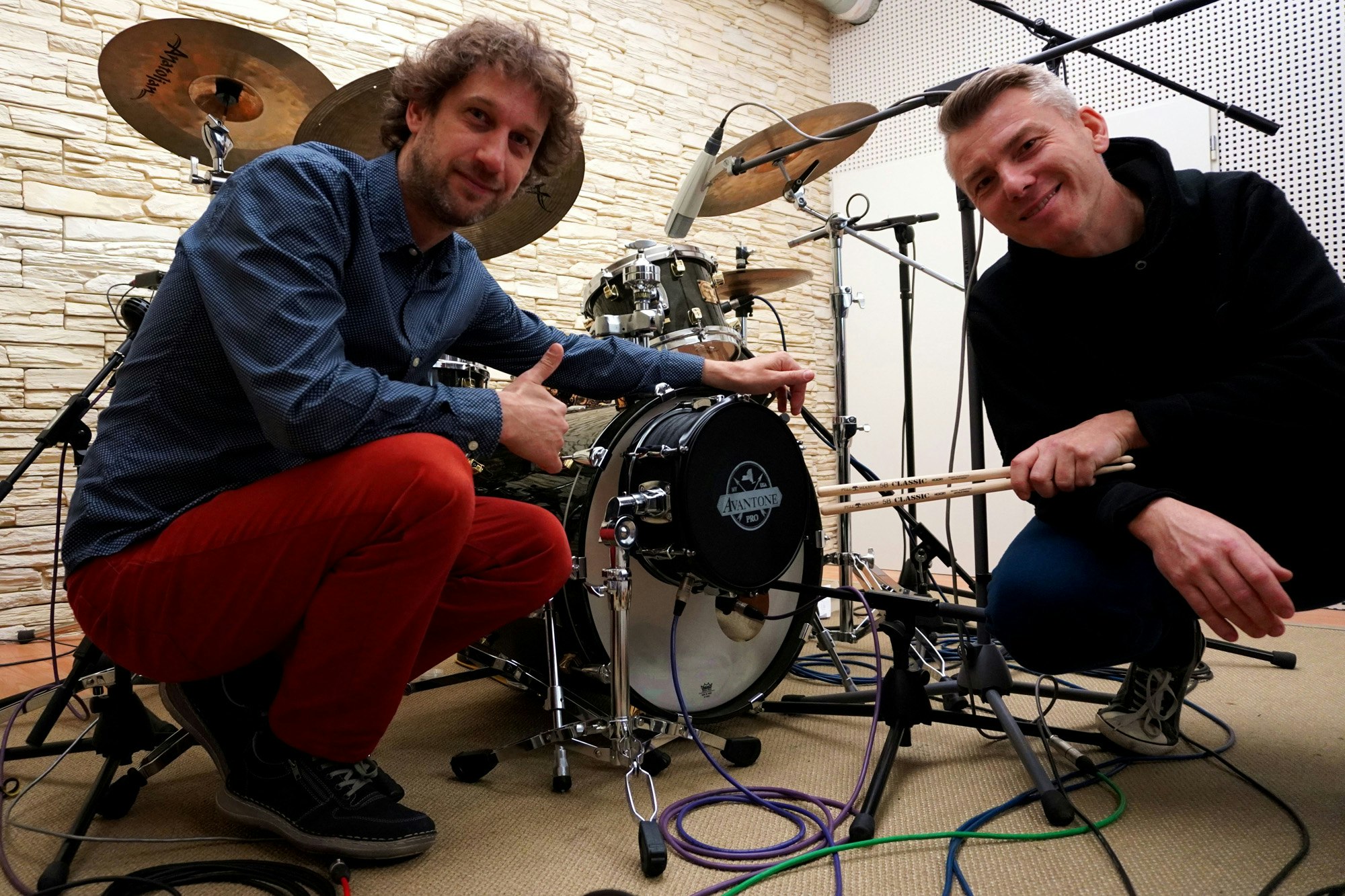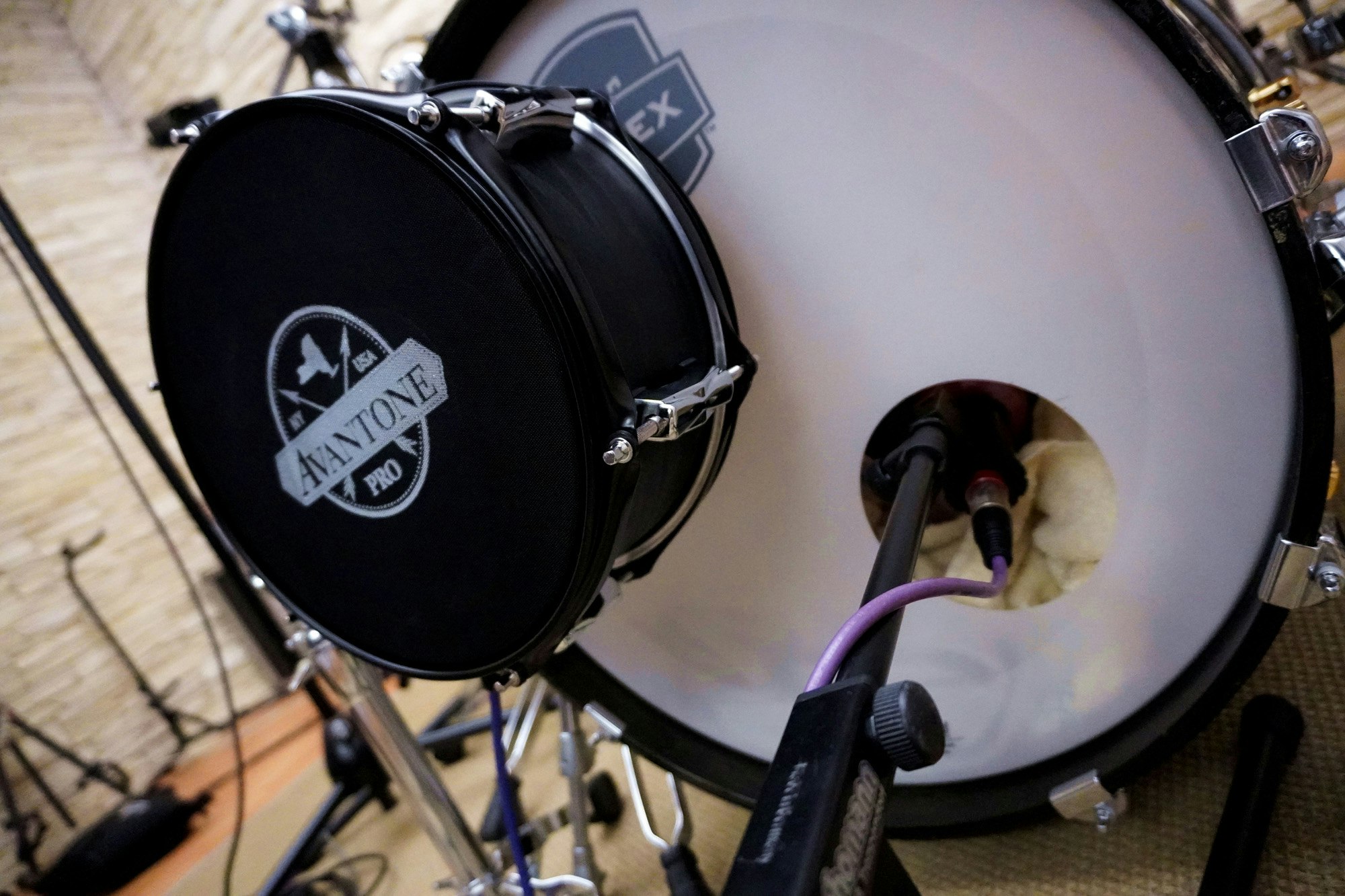Using Two Mics to Record Kick Drum
This guest article comes to us with some help from our good friends and distribution partners in the Czech Republic, DISK Multimedia!
Using multiple microphones to record a kick drum is a common practice... but why do it? After all, the sound of a kick drum is nowhere near as complex as the sound as a human voice or a violin... and one mic is usually enough for those applications, right?
There are a few reasons. First, bass frequencies can be difficult to mix, as too much bass across the kick drum, toms, can create a muddy low-end sound in your mix. Using one mic to enhance the lowest frequencies of the kick drum can give you more control over your bass content, while using a second mic to focus on the mids and highs can give you independent control over the breath and attack of the drum sound.
With both mics recording the same drum, you can them independently mix the two tracks of kick drum to get the best of both worlds. Attempting this with a single kick drum mic can result in some rather wild EQ decisions... or worse, some low-end frequencies missing from your recordings entirely.
Which mics to use for kick drum
We recommend using the Mondo in conjunction with The Kick.
Mondo is a fast-reacting dynamic microphone with great SPL handling and a broad 20Hz - 15kHz frequency response. While it can capture the full range of your kick drum sound when used alone, in this example we'll be enhancing our kick sound by combining recordings from Mondo and The Kick.
The Kick is a large, unique subharmonic microphone, or Subkick, that looks a bit like a small drum. Its large membrane allows it to resonate at a very low frequency that adds weight to kick drum recordings. We'll be using The Kick to enhance the lowest of the lows in this setup. Note that the Kick's membrane is technically a speaker cone that might be familiar to some of you... but that's a topic for a whole different article.
Note that this combo is great for any low-frequency source, including bass guitar cabinets. Experiment!
Microphone Placement for Kick Drum Recording
Place The Kick microphone about three inches away from the resonant side of your kick drum. Connect it to your interface with an XLR cable. The Kick is a dynamic microphone that does not require phantom power.
Place Mondo about three inches away from the resonant side of your kick drum. Connect it to your interface with an XLR cable. Mondo is also a dynamic microphone that does not require phantom power.
Record a kick drum performance onto two separate tracks, one for each microphone. Solo or Mute the two tracks to hear the difference between Kick and Mondo. Try blending the levels of these two tracks until you have a sound that you like.
Now we experiment. Leave The Kick mic where it is, but experiment with different mic positions for Mondo. Try placing it inside the kickdrum, if you have a drum head that allows for it. Try placing it on the batter side. Try putting it several feet away to capture more of a roomy sound.
Note that if you're recording a full band or kit, you'll of course have to adjust these two mics to suit the mix of the entire song, not just the kick drum.
Jakub Simane on the winning combination of Mondo and The Kick
In my studio productions, I work primarily with acoustic music, so capturing the natural sound in its full dynamic and frequency range is one of the main priorities for me.
When capturing a big drum, I felt like something was missing from the lower frequencies with more commonly-used microphones, that's why I was happy to try out the Avantone Kick. It delivered exactly what I expected; giving the drum its size and fullness. I didn't return the mic!
When I use it in conjunction with Mondo (primarily for capturing the attack), they complement each other perfectly. This makes it very easy to work with the recorded material in further productions.
—Musician, sound designer, producer - Jakub Simane


